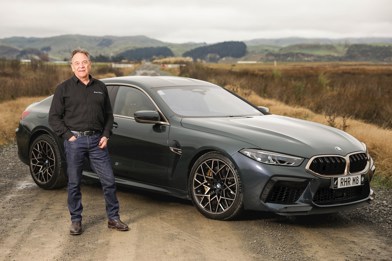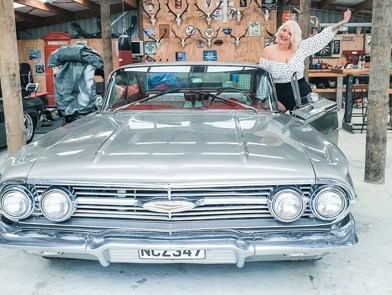Is diesel dead? Not at all judging by the tremendous kick of the triple-charged V8 TDI engine found in the new SQ8 and revised SQ7 models that have just launched on the New Zealand market.
These 4.0litre compression-ignition engines, with their supercharged intakes and twin exhaust-driven turbos produce 900Nm of torque, enough grunt to encourage day-dreams that the wheels of these two flagship Audi SUVs deliver enough rotational force to reverse the earth’s spin.
Yeah, but are they kind to the atmosphere surrounding the planet? Well, they’re not quite as clean as the latest $144,900 210kW iteration of the Audi Q7, the 3.0litre V6-powered 2020 Q7 50 TDI, which produces 181g/km of CO2, but they’re close. Independent WLTP testing has identified the average fuel consumption of the $184,900 SQ7 at 7.8litres/100km, which equates to 207g of CO2 being emitted every kilometer.
Driving all three new large Audi SUV models in the one day over the tortuously-twisty roads of Banks Peninsular highlighted that the more impressive driving experience of the two SQ models is worth the extra $40K-$50K spend, and that if you’ve got that final $10K handy, it’s a highly-rewarding investment in the $194,400 SQ8. You might lose the third row seating of the SQ7 in the 8, but gain much in terms of sexier exterior design and more exciting driving dynamics.
The former is due to the swoopier roofline and more distinctive hip-lines of the Audi five-seater, which make the SQ8 look more a sibling of the Porsche Cayenne in profile rather than a relative of the boxier Q7 and SQ7. The latter is due to the increased lateral stiffness of the SQ8’s body, and software changes to the many systems governing the electronically-enhanced chassis that increase its sportiness. The difference between the two SQ models is immediately apparent from the driver’s seats of both, and it’s incredible that it’s mostly been created with code.
We can credit the new 48-volt electronic architecture of all three new Audis for the ability to fine-tune the chassis software to create different driving personas for each. The new Q7 now has the optional four-wheel-steering system, air suspension, and S-line trim of the previous model as standard equipment, a factor that more than accounts for the $11,000 price rise, and now shares the increased agility of its SQ-badged all-wheel-steering stable-mates to some degree. (Especially when equipped with the optional 22” wheels instead of the standard 20s.)
Both the SQ models sampled came with the $13,000 optional performance that includes larger red brake calipers, active roll stabilization, and a sports rear differential that adjusts the side-to-side torque delivery according to which rear tyre enjoys the most traction. It’s the software changes to the active stabiliser bars of the two SQ models that most confirm whether there is a ‘7’ or an ‘8’ on the tailgate badge. Both deliver sporty car-like handling, but the SQ8 is less prone to body roll, and keener to hold the driver’s chosen cornering line.
If there was more tactile feedback to be felt through the rim of the SQ8’s steering wheel, it might just persuade prospective super-SUV buyers from entering Bentley, Lamborghini, and Porsche showrooms to enjoy similar Volkswagen Group-shared chassis technology with a brand-defining serving of road feel. Unfortunately, all three new 2020 Audi SUVs lack this minor driving pleasure enhancement in varying degrees.
On the flip side, a strong, well-designed interior has long been an Audi virtue, and all three new models inherit the huge stacked twin touch-screens on the centre-dash that first made their debut on the A8 luxury-saloon. Augmenting these is the ‘virtual
cockpit’ located behind the steering wheel, which functions much like a smart-watch does with your phone by providing essential information more easily and more accessibly. Above that is a small heads-up display, which means the driver has no less than four screens to look at, although the last is reserved mainly for instant speed and current speed limit info. It’s all relatively intuitive to use, although a digi-phobe like me would love it if Audi continued to offer a dedicated reset button for the trip meter. That’ll limit the number of control inputs to one instead of three to perform this simple task.
Virtually everything inside these three premium SUVs is finished off with lashings of thick Valcona leather, enhanced by diamond stitching on the two SQ versions. However the real highlight is the choice of two great diesel 4wd powertrains, a 600Nm V6 mildly hybridized in the interests of saving fuel (Q7), or a kick-butt 320kW V8 that’ll reel in far horizons with a near-instant delivery of the 900Nm torque peak at 1250rpm (SQ7, SQ8). Either way, you’ll be getting the ability to tow 3500kg trailers, something diesels are particularly adept at.




